Each of these perennials brings unique beauty and benefits, ranging from drought tolerance and low maintenance to attracting pollinators and providing vibrant colors.
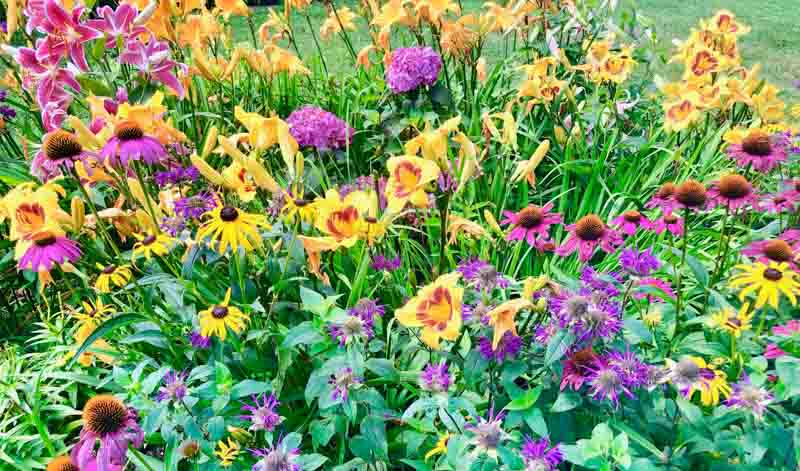
Perennial flowers and plants are the cornerstone of many gardens, offering a recurring display of color and form year after year. Unlike annuals, which complete their life cycle in one growing season, perennials return each spring, growing in size and stature. This makes them an economical and low-maintenance option for gardeners looking to create a long-lasting and evolving landscape.
Choosing the right perennials for your garden is a delightful yet crucial task that can significantly influence the beauty and success of your landscape. Here’s how to make the best choices:
Consider Climate and Hardiness Zone: Select plants suited to your area’s climate and temperature. The USDA Hardiness Zone system can be a helpful guide.
Know Your Garden’s Conditions: Assess the specific conditions of your garden, including light exposure, soil type, and moisture levels. Different perennials thrive in varying conditions — some love the sun, while others prefer shade or partial shade.
Consider Bloom Time: Aim for a variety of perennials that bloom at different times for a continuous display of color throughout the growing season. Mixing early bloomers like irises with late-season stars such as asters ensures your garden remains vibrant.
Size and Growth Habit: Account for the mature size of the plants, including height and spread, to avoid overcrowding. Consider growth habit too; some perennials, like groundcovers, can spread rapidly, while others remain compact.
Maintenance Requirements: Some perennials require more maintenance than others. If you prefer low-maintenance gardening, opt for drought-tolerant and disease-resistant varieties.
Attract Wildlife: Many perennials are excellent for attracting pollinators. Plants like coneflowers and lavender are not only beautiful but also invite bees, butterflies, and birds into your garden. Opt for deer-resistant perennials or rabbit-resistant perennials if these animals are a problem in your area.
Personal Aesthetic: Choose perennials that appeal to your sense of style and complement the overall design of your garden. Whether you’re drawn to bold colors, fine textures, or a mix of both, select plants that resonate with your personal aesthetic.
Achillea is valued for its pleasantly fragrant, feathery foliage and its long-lasting, conspicuous, flat umbel flowers. Vital ingredient of herbaceous borders or prairie plantings, Achillea blooms for weeks from late spring to late summer, in a wide range of colors sgrdegdfsghfg
| Hardiness | 3 - 9 |
|---|---|
| Plant type | Perennials |
| Exposure | Full Sun |
| Season of Interest |
Spring (Late) Summer (Early, Mid, Late) |
| Height |
1' - 3' (30cm - 90cm) |
| Spread |
1' - 2' (30cm - 60cm) |
Agastache, the perfect addition to your garden, offers a delightful combination of vibrant colors, spiky texture, and aromatic foliage. These herbaceous perennials are known for their versatility, drought tolerance, and abundant blooms, making them a must-have for any garden.
| Hardiness | 5 - 10 |
|---|---|
| Plant type | Perennials |
| Exposure | Full Sun |
| Season of Interest |
Summer (Early, Mid, Late) Fall |
| Height |
1' - 6' (30cm - 180cm) |
| Spread |
1' - 3' (30cm - 90cm) |
With over 100 species, Asclepias plants are native to the U.S. and Canada. These perennials feature clusters of small, uniquely shaped flowers that attract butterflies. They are a beautiful addition to perennial, butterfly, cottage, and prairie gardens, bringing charm and easy care.
| Hardiness | 3 - 10 |
|---|---|
| Plant type | Perennials |
| Exposure | Full Sun |
| Season of Interest |
Spring (Late) Summer (Early, Mid, Late) Fall |
| Height |
2' - 6' (60cm - 180cm) |
| Spread |
1' - 3' (30cm - 90cm) |
New England Aster (Aster novae-angliae) provides an outstanding late-season show with its violet or lavender daisy-like flowers. This tall and spectacular Aster is easy to grow, long-lived, and attracts butterflies with its nectar-rich blooms. It brings cheerful fall color and adds beauty to any garden.
| Hardiness | 3 - 8 |
|---|---|
| Plant type | Perennials |
| Exposure | Full Sun, Partial Sun |
| Season of Interest |
Summer (Late) Fall |
| Height |
1' - 6' (30cm - 180cm) |
| Spread |
1' - 3' (30cm - 90cm) |
Coreopsis, also known as Tickseed, is a delightful perennial with bright and cheery daisy-like flowers that bloom profusely from summer to fall. With its vibrant colors and long-lasting blooms, Coreopsis adds a burst of sunshine to gardens and attracts butterflies, making it a favorite choice for gardeners.
| Hardiness | 4 - 10 |
|---|---|
| Plant type | Annuals, Perennials |
| Exposure | Full Sun |
| Season of Interest |
Summer (Early, Mid, Late) Fall |
| Height |
6" - 4' (15cm - 120cm) |
| Spread |
1' - 2' (30cm - 60cm) |
Delphiniums are annual or perennial plants known for their tall, vibrant spires of blue, purple, pink, or white flowers. Popular in cottage gardens, they add vertical interest, attract pollinators, and are often used in cut flower arrangements.
| Hardiness | 3 - 9 |
|---|---|
| Plant type | Annuals, Perennials |
| Exposure | Full Sun, Partial Sun |
| Season of Interest |
Summer (Early, Mid, Late) Fall |
| Height |
2' - 8' (60cm - 240cm) |
| Spread |
1' - 2' (30cm - 60cm) |
Tough as nails, Coneflowers (Echinacea) are wonderful additions to the landscape with their brightly colored blossoms to be enjoyed over a long flowering season. Simple to grow, mostly trouble-free, and thriving on neglect, they are reliable performers that are tolerant to almost everything
| Hardiness | 3 - 9 |
|---|---|
| Plant type | Perennials |
| Exposure | Full Sun |
| Season of Interest |
Spring (Late) Summer (Early, Mid, Late) Fall |
| Height |
2' - 4' (60cm - 120cm) |
| Spread |
1' - 3' (30cm - 90cm) |
Known for their vibrant colors and ability to withstand drought, Blanket Flowers (Gaillardia) are short-lived perennials that create stunning displays of bright, single or double daisy-like flowers. These colorful blooms adorn attractive gray-green foliage, adding beauty to the garden from early summer to fall.
| Hardiness | 3 - 10 |
|---|---|
| Plant type | Perennials |
| Exposure | Full Sun |
| Season of Interest |
Summer (Early, Mid, Late) Fall |
| Height |
1' - 3' (30cm - 90cm) |
| Spread |
1' - 2' (30cm - 60cm) |
Hemerocallis, commonly known as daylilies, are hardy and versatile perennial plants that produce stunning flowers in a wide range of colors and patterns. With their long blooming season, ease of care, and ability to adapt to various growing conditions, daylilies are a popular choice for gardens and landscapes.
| Hardiness | 3 - 9 |
|---|---|
| Plant type | Perennials |
| Exposure | Full Sun, Partial Sun |
| Season of Interest |
Spring (Late) Summer (Early, Mid, Late) Fall |
| Height |
1' - 4' (30cm - 120cm) |
| Spread |
1' - 2' (30cm - 60cm) |
Helenium, also known as sneezeweed, is a vibrant perennial that produces stunning daisy-like flowers in shades of yellow, orange, and red. These long-lasting blooms attract butterflies and bees to the garden. With their tall stems and bold colors, heleniums add a cheerful and eye-catching display to borders, meadows, and cottage gardens.
| Hardiness | 3 - 8 |
|---|---|
| Plant type | Perennials |
| Exposure | Full Sun |
| Season of Interest |
Summer (Mid, Late) Fall |
| Height |
3' - 5' (90cm - 150cm) |
| Spread |
1' - 2' (30cm - 60cm) |
Iris germanica, commonly known as Bearded Iris or German Iris, is a captivating perennial with show-stopping flowers in various colors. Its tall, elegant stalks and distinctively patterned petals create a striking presence in gardens. Easy to grow and low-maintenance, it is a favorite choice for adding beauty to landscapes.
| Hardiness | 3 - 10 |
|---|---|
| Plant type | Perennials |
| Exposure | Full Sun |
| Season of Interest |
Spring (Late) Summer (Early, Late) |
| Height |
9" - 4' (23cm - 120cm) |
| Spread |
1' - 2' (30cm - 60cm) |
Kniphofia, commonly known as Red Hot Poker or Torch Lily, is a striking perennial with tall spikes of tubular flowers in vibrant shades of red, orange, and yellow. This drought-tolerant plant adds a bold and dramatic touch to gardens, attracting hummingbirds and butterflies with its showy blooms.
| Hardiness | 5 - 9 |
|---|---|
| Plant type | Perennials |
| Exposure | Full Sun |
| Season of Interest |
Spring (Late) Summer (Early, Mid, Late) Fall |
| Height |
1' - 6' (30cm - 180cm) |
| Spread |
1' - 3' (30cm - 90cm) |
Lavandula angustifolia, commonly known as English Lavender, is a versatile and aromatic perennial herb. With its slender, gray-green leaves and spikes of fragrant purple flowers, it adds beauty and a delightful scent to gardens. It is valued for its calming properties and is used in aromatherapy, culinary applications, and as a decorative plant.
| Hardiness | 5 - 9 |
|---|---|
| Plant type | Herbs, Perennials, Shrubs |
| Exposure | Full Sun |
| Season of Interest |
Summer (Early, Mid) Fall |
| Height |
1' - 3' (30cm - 90cm) |
| Spread |
1' - 3' (30cm - 90cm) |
Renowned for its magnificent blooms and vibrant green foliage, Shasta Daisy (Leucanthemum x superbum) is a cherished perennial. Offering a diverse selection of cultivars, there is a Shasta Daisy suited for every garden. These low-maintenance plants enchant with weeks of colorful flowers, beginning in early to mid-summer, making them a delightful addition to any landscape.
| Hardiness | 4 - 9 |
|---|---|
| Plant type | Perennials |
| Exposure | Full Sun, Partial Sun |
| Season of Interest |
Summer (Early, Mid, Late) |
| Height |
2' - 4' (60cm - 120cm) |
| Spread |
1' - 3' (30cm - 90cm) |
Liatris, known as blazing star, features striking vertical spikes of purple, pink, or white flowers that bloom uniquely top-down. Native to North American prairies, this drought-tolerant perennial attracts butterflies and resists deer, enhancing gardens with its resilient and eye-catching presence from late summer into fall.
| Hardiness | 3 - 9 |
|---|---|
| Plant type | Perennials |
| Exposure | Full Sun |
| Season of Interest |
Summer (Mid, Late) Fall |
| Height |
1' - 5' (30cm - 150cm) |
| Spread |
6" - 2' (15cm - 60cm) |
Lupinus, commonly known as lupines, are a genus of flowering plants that encompass a wide variety of species. These herbaceous perennials or annuals produce striking spikes of colorful flowers in various hues, adding beauty and vertical interest to gardens. They range in size from small to tall, offering diverse options for landscaping.
| Hardiness | 3 - 10 |
|---|---|
| Plant type | Annuals, Perennials, Shrubs |
| Exposure | Full Sun, Partial Sun |
| Season of Interest |
Spring (Late) Summer (Early) |
Vibrant and distinctive, Monarda (Bee Balm) is a summer-blooming perennial that adds a splash of color to borders. Whether planted individually or in groups, its eye-catching flower heads create a captivating display, making it a standout plant in any garden.
| Hardiness | 3 - 9 |
|---|---|
| Plant type | Perennials |
| Exposure | Full Sun, Partial Sun |
| Season of Interest |
Summer (Mid, Late) Fall |
| Height |
1' - 4' (30cm - 120cm) |
| Spread |
1' - 3' (30cm - 90cm) |
Nepeta, commonly known as Catmint, is a versatile perennial herb that adds beauty and interest to the garden. With its aromatic foliage and attractive spikes of lavender-blue flowers, it attracts pollinators and is drought-tolerant. It’s a great choice for borders, rock gardens, and cottage-style landscapes.
| Hardiness | 3 - 9 |
|---|---|
| Plant type | Perennials |
| Exposure | Full Sun, Partial Sun |
| Season of Interest |
Spring (Late) Summer (Early, Mid, Late) Fall |
| Height |
1' - 3' (30cm - 90cm) |
| Spread |
1' - 3' (30cm - 90cm) |
Beloved for their abundant blooms, the beauty of their exquisite flowers, their delightful fragrance, and their bold foliage changing shades over the seasons, peony flowers add a dazzling splash of color in the landscape.
| Hardiness | 3 - 9 |
|---|---|
| Plant type | Perennials |
| Exposure | Full Sun, Partial Sun |
| Season of Interest |
Spring (Late) Summer (Early) |
| Height |
2' - 7' (60cm - 210cm) |
| Spread |
2' - 3' (60cm - 90cm) |
Penstemon, known as beardtongue, is a North American native plant celebrated for its vibrant, tubular flowers and resilience. Diverse in size and color, it thrives in various landscapes, attracting pollinators while being low-maintenance, drought-tolerant, and non-invasive, making it a gardener’s favorite for both ecological and aesthetic purposes.
| Hardiness | 3 - 10 |
|---|---|
| Plant type | Perennials, Shrubs |
| Exposure | Full Sun, Partial Sun |
| Season of Interest |
Spring (Mid, Late) Summer (Early, Mid, Late) Fall |
| Height |
1' - 6' (30cm - 180cm) |
| Spread |
1' - 5' (30cm - 150cm) |
Russian Sage (Perovskia atriplicifolia) is a captivating deciduous sub-shrub or perennial with silvery stems that display a delicate, airy cloud of blue to lavender flowers from mid-summer to early fall. Its tubular blossoms, arranged in whorls along the stems, are a magnet for pollinating bees and hummingbirds.
| Hardiness | 4 - 9 |
|---|---|
| Plant type | Perennials, Shrubs |
| Exposure | Full Sun |
| Season of Interest |
Summer (Mid, Late) Fall |
| Height |
1' - 4' (30cm - 120cm) |
| Spread |
1' - 4' (30cm - 120cm) |
Black-Eyed Susan (Rudbeckia hirta): Native to North America, this resilient prairie plant features vibrant golden, orange, or bicolor flowers with dark chocolate cones. Blooming for months, it adds a burst of color to any garden, requiring minimal care and offering long-lasting beauty.
| Hardiness | 3 - 9 |
|---|---|
| Plant type | Annuals, Perennials |
| Exposure | Full Sun |
| Season of Interest |
Summer (Early, Mid, Late) Fall |
| Height |
1' - 3' (30cm - 90cm) |
| Spread |
1' - 2' (30cm - 60cm) |
Salvia is a diverse and useful genus of plants that offers a variety of ornamental, culinary, and medicinal benefits. With their showy flowers, fragrant leaves, and ease of cultivation, Salvia plants are a popular choice for gardeners and plant enthusiasts around the world.
| Hardiness | 3 - 12 |
|---|---|
| Plant type | Annuals, Perennials, Shrubs |
| Exposure | Full Sun, Partial Sun |
| Season of Interest |
Spring (Early, Mid, Late) Summer (Early, Mid, Late) Fall |
| Height |
1' - 6' (30cm - 180cm) |
| Spread |
1' - 6' (30cm - 180cm) |
Sedum, commonly known as stonecrop, is a diverse genus of succulent plants that includes a wide range of species and cultivars. These hardy and drought-tolerant plants feature fleshy leaves and vibrant flowers, making them popular choices for rock gardens, borders, and containers. They are low-maintenance and attract pollinators to the garden.
| Hardiness | 3 - 9 |
|---|---|
| Plant type | Perennials |
| Exposure | Full Sun |
| Season of Interest |
Summer (Mid, Late) Fall Winter |
| Height |
3" - 2' (8cm - 60cm) |
| Spread |
6" - 2' (15cm - 60cm) |
Solidago, commonly known as goldenrod, is a perennial plant with bright yellow, plume-like flowers that bloom in late summer and fall. This hardy and versatile plant adds a splash of color to the garden and attracts pollinators. It thrives in full sun and well-drained soil, making it a great addition to borders and wildflower gardens.
| Hardiness | 3 - 9 |
|---|---|
| Plant type | Perennials |
| Exposure | Full Sun, Partial Sun |
| Season of Interest |
Summer (Mid, Late) Fall |
| Height |
1' - 5' (30cm - 150cm) |
| Spread |
1' - 3' (30cm - 90cm) |
Actaea simplex (Bugbane), formerly known as Cimicifuga simplex, is a stunning perennial that adds architectural height and late summer blooms to shaded borders. Its long, fluffy spires are filled with strongly fragrant, creamy-white flowers, creating an eye-catching display in the garden.
| Hardiness | 4 - 8 |
|---|---|
| Plant type | Perennials |
| Exposure | Partial Sun, Shade |
| Season of Interest |
Summer (Late) Fall |
Aquilegia, also known as Columbine or Granny’s Bonnet, is a superb perennial for any garden. Its delicate, bell-shaped flowers form beautiful clusters, complemented by lacy foliage that emerges early in the year. Blooming abundantly for 4-6 weeks from mid-spring to summer, Columbine bridges the gap between early spring bulbs and the peak of the garden season.
| Hardiness | 3 - 9 |
|---|---|
| Plant type | Perennials |
| Exposure | Full Sun, Partial Sun |
| Season of Interest |
Spring (Mid, Late) Summer (Early, Mid, Late) |
| Height |
1' - 3' (30cm - 90cm) |
| Spread |
6" - 2' (15cm - 60cm) |
Astilbes are highly sought-after plants, perfect for shady and moist environments. With their elegant, vibrant flower plumes that rise above fern-like foliage, these plants remain visually appealing throughout the season. Their long-lasting blooms bring brightness to shade gardens and create a stunning burst of color in any landscape.
| Hardiness | 3 - 9 |
|---|---|
| Plant type | Perennials |
| Exposure | Full Sun, Partial Sun, Shade |
| Season of Interest |
Spring (Late) Summer (Early, Mid, Late) |
| Height |
6" - 5' (15cm - 150cm) |
| Spread |
1' - 2' (30cm - 60cm) |
Resembling Forget-Me-Nots, Siberian Bugloss (Brunnera macrophylla) are perennials boasting heart-shaped leaves and clusters of small, blue flowers. With their vibrant blooms and lush foliage, they create a captivating display in spring, adding a cool burst of color to the garden.
| Hardiness | 3 - 8 |
|---|---|
| Plant type | Perennials |
| Exposure | Partial Sun, Shade |
| Season of Interest |
Spring (Mid, Late) Summer (Early, Mid, Late) |
| Height |
1' - 2' (30cm - 60cm) |
| Spread |
2' - 3' (60cm - 90cm) |
Dicentra, commonly known as Bleeding Heart, is a favorite among gardeners. These rhizomatous or tuberous perennials showcase heart-shaped flowers that hang delicately in arching clusters above attractively divided leaves. They thrive in shade and offer a long blooming season, from late spring to early fall in cooler climates. Their graceful foliage adds beauty even before the blooms emerge.
| Hardiness | 3 - 9 |
|---|---|
| Plant type | Perennials |
| Exposure | Partial Sun, Shade |
| Season of Interest |
Spring (Late) Summer (Early, Mid, Late) Fall |
| Height |
6" - 3' (15cm - 90cm) |
| Spread |
6" - 3' (15cm - 90cm) |
Foxgloves are known for their striking, tubular, bell-shaped flowers arranged along the tall spires. They come in various colors, including purple, pink, yellow, white, and red. The flowers’ interior often features speckled, colored throats that guide pollinators to the nectar source.
| Hardiness | 4 - 9 |
|---|---|
| Plant type | Annuals, Perennials |
| Exposure | Full Sun, Partial Sun |
| Season of Interest |
Spring (Late) Summer (Early, Mid) |
| Height |
2' - 5' (60cm - 150cm) |
| Spread |
1' - 2' (30cm - 60cm) |
Epimedium, known as barrenwort or fairy wings, is a charming, low-growing perennial prized for its delicate, heart-shaped foliage and dainty flowers in shades of yellow, pink, purple, and white. Ideal for shade gardens, it’s deer and rabbit resistant, drought-tolerant, and provides excellent ground cover in woodland settings.
| Hardiness | 4 - 8 |
|---|---|
| Plant type | Perennials |
| Exposure | Partial Sun, Shade |
| Season of Interest |
Spring (Mid, Late) Summer (Early) Fall |
| Height |
8" - 1' (20cm - 30cm) |
| Spread |
1' - 3' (30cm - 90cm) |
Helleborus, commonly known as Lenten Rose or Christmas Rose, is a delightful perennial that blooms in late winter or early spring, adding much-needed color to the garden. With its nodding flowers in shades of white, pink, purple, or green, and attractive evergreen foliage, it is a resilient and long-lasting plant that thrives in shade or partial shade.
| Hardiness | 3 - 9 |
|---|---|
| Plant type | Perennials |
| Exposure | Partial Sun, Shade |
| Season of Interest |
Spring (Early, Mid) Winter |
| Height |
1' - 2' (30cm - 60cm) |
| Spread |
1' - 2' (30cm - 60cm) |
Grow Heuchera for its stunning foliage colors, ranging from deep burgundy to vibrant lime green, adding year-round beauty to your garden. These versatile and low-maintenance perennials attract pollinators and thrive in various conditions, making them perfect for adding color and texture to borders, containers, and rock gardens.
| Hardiness | 4 - 9 |
|---|---|
| Plant type | Perennials |
| Exposure | Full Sun, Partial Sun, Shade |
| Season of Interest |
Spring (Early, Mid, Late) Summer (Early, Mid, Late) Fall Winter |
| Height |
1' - 2' (30cm - 60cm) |
| Spread |
1' - 2' (30cm - 60cm) |
Hosta, beloved for its lush foliage, is a versatile and low-maintenance perennial. With a wide range of leaf colors, shapes, and sizes, Hosta adds texture and elegance to shady areas of the garden. From small, compact varieties to large, dramatic specimens, Hosta plants bring beauty and tranquility to any landscape.
| Hardiness | 3 - 9 |
|---|---|
| Plant type | Perennials |
| Exposure | Full Sun, Partial Sun, Shade |
| Season of Interest |
Spring (Mid, Late) Summer (Early, Mid, Late) Fall |
| Height |
6" - 3' (15cm - 90cm) |
| Spread |
1' - 4' (30cm - 120cm) |
Ligularia, or Leopard Plant, is a visually striking perennial known for its large, glossy leaves and tall spikes of bright yellow or orange daisy-like flowers. Thriving in moist, shaded areas, it’s a perfect addition to woodland gardens, offering a bold texture and vibrant color contrast in the shade.
| Hardiness | 3 - 9 |
|---|---|
| Plant type | Perennials |
| Exposure | Full Sun, Partial Sun, Shade |
| Season of Interest |
Summer (Mid, Late) Fall |
| Height |
2' - 6' (60cm - 180cm) |
| Spread |
2' - 4' (60cm - 120cm) |
Pulmonaria, commonly known as lungwort, is a versatile perennial prized for its unique foliage that showcases stunning variegation and attractive silver spots. Its early spring blooms, ranging from pink to blue, add a burst of color to the garden and attract pollinators, making it a favorite among gardeners.
| Hardiness | 3 - 9 |
|---|---|
| Plant type | Perennials |
| Exposure | Partial Sun, Shade |
| Season of Interest |
Spring (Early, Mid, Late) |
| Height |
8" - 1' (20cm - 30cm) |
| Spread |
1' - 2' (30cm - 60cm) |
Foam Flower, a charming woodland perennial, is celebrated for its delicate, airy blooms and striking foliage. Ideal for shady gardens, it forms lush carpets of heart-shaped leaves, often with beautiful markings. In spring, it produces feathery flower spikes, creating a whimsical, foam-like display. Low-maintenance and shade-loving, it’s a gardener’s delight.
| Hardiness | 3 - 9 |
|---|---|
| Plant type | Perennials |
| Exposure | Partial Sun, Shade |
| Season of Interest |
Spring (Mid, Late) Summer (Early) Fall |
| Height |
6" - 1' (15cm - 30cm) |
| Spread |
6" - 2' (15cm - 60cm) |
Trilliums are cherished woodland wildflowers, adored for their symmetrical beauty. These rhizomatous perennials boast exquisite blooms and mottled foliage, creating a captivating display in shade gardens. With their resilience and harmonious blending among other woodland plants, Trilliums are a true gem of the spring season.
| Hardiness | 3 - 9 |
|---|---|
| Plant type | Perennials |
| Exposure | Partial Sun, Shade |
| Season of Interest |
Spring (Mid, Late) Summer (Early) |
| Height |
1' - 2' (30cm - 60cm) |
| Spread |
1' - 2' (30cm - 60cm) |
Hydrangea macrophylla, or Big Leaf Hydrangea from Japan, is a garden favorite. This deciduous shrub has a rounded habit with large leaves and long-blooming summer flowers. It’s divided into Mophead Hydrangeas with large, showy flower heads, and Lacecap Hydrangeas with flat clusters of radiant sterile florets surrounding tiny fertile ones.
| Hardiness | 5 - 9 |
|---|---|
| Plant type | Shrubs |
| Exposure | Full Sun, Partial Sun |
| Season of Interest |
Spring Summer Fall |
| Height |
2' - 6' (60cm - 180cm) |
| Spread |
2' - 6' (60cm - 180cm) |
Tricyrtis, commonly known as Toad Lily, is a unique perennial, celebrated for its exotic, orchid-like flowers adorned with intricate spots. Thriving in shaded areas, it offers a late-season bloom of purple, pink, or white flowers, adding a splash of color to the garden when most other plants have faded.
| Hardiness | 4 - 9 |
|---|---|
| Plant type | Perennials |
| Exposure | Partial Sun, Shade |
| Season of Interest |
Summer (Late) Fall |
| Height |
1' - 3' (30cm - 90cm) |
| Spread |
1' - 2' (30cm - 60cm) |
Violets are charming and colorful flowers that are easy to grow and maintain. They come in various hues and sizes and are known for their delightful fragrance. Violas are perfect for gardens, balconies, and even as indoor plants and attract pollinators like bees and butterflies.
| Hardiness | 3 - 9 |
|---|---|
| Plant type | Annuals, Perennials |
| Exposure | Full Sun, Partial Sun, Shade |
| Season of Interest |
Spring (Early, Mid, Late) Summer (Early, Mid, Late) Fall Winter |
| Height |
2" - 1' (5cm - 30cm) |
| Spread |
4" - 1' (10cm - 30cm) |
Caring for perennial flowers and plants is a rewarding endeavor that enhances the beauty and health of your garden. These plants, known for their ability to return year after year, require specific attention to thrive. Here are essential tips for perennial care:
Watering: Initially, perennials need consistent watering to establish a robust root system. Once established, most perennials are relatively drought-tolerant but still benefit from regular watering, especially during dry spells. The key is to water deeply but infrequently to encourage deep root growth.
Soil and Mulching: Perennials thrive in well-draining soil enriched with organic matter. Adding compost annually can improve soil quality and plant health. Mulching helps retain soil moisture, suppress weeds, and maintain an even soil temperature, benefiting plant roots.
Fertilizing: Feed perennials with a balanced, slow-release fertilizer in early spring as new growth appears. Over-fertilizing can lead to lush foliage at the expense of flowers, so follow recommended rates.
Pruning and Deadheading: Regular pruning promotes healthy growth and can encourage more blooms. Deadheading, or removing spent flowers, prevents plants from putting energy into seed production, often stimulating a second bloom in some species.
Division: Many perennials benefit from being divided every few years to maintain vigor. Division involves splitting the plant into smaller sections, which can be replanted or shared.
Winter Care: In colder regions, some perennials may require protection in winter. Mulching after the ground freezes can prevent freeze-thaw cycles that may heave plants out of the ground.
Pest and Disease Management: Regularly inspect plants for signs of pests and diseases. Healthy, well-cared-for perennials are less prone to problems, but if issues arise, treat them promptly using appropriate methods.
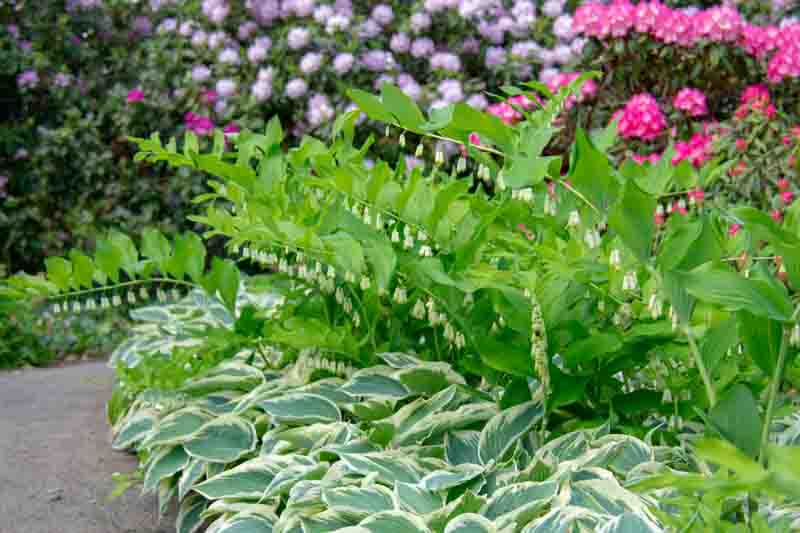
Shade Perennials: Hosta and Solomon’s Seal
What type of flowers come back every year?
Flowers that come back every year are known as perennials. These plants live for more than two years, often dying back in the winter and re-sprouting in the spring from their rootstock. Common examples include lavender, echinacea (coneflower), and rudbeckia (black-eyed Susan).
What do perennial flowers mean?
The term “perennial” in flowers refers to plants whose life cycle lasts for more than two years. Unlike annuals that complete their life cycle in one growing season, perennials regrow each spring from their root system, year after year. They are known for their longevity and the ability to bloom multiple times over many seasons.
Which perennials bloom the longest?
Some perennials known for their long blooming period include:
What is the easiest perennial to grow?
Easy-to-grow perennials that are low-maintenance and hardy include:
Do any perennials bloom all summer?
Yes, some perennials can bloom all summer. These include:
Perennials are plants that live for several years, blooming seasonally. When selecting them for your garden, consider factors like climate, soil type, sun exposure, and desired color schemes. They offer variety, longevity, and less maintenance, making them ideal for creating a vibrant, evolving garden landscape year after year.
Perennial plants perfect for shade gardens include Hostas, with their lush foliage, Hellebores for winter blooms, Astilbe with feathery flower plumes, delicate Bleeding Hearts, and the ground-covering Epimedium. Ferns add a textural contrast, while Solomon’s Seal and Toad Lilies bring unique beauty to tranquil, shaded retreats.
Some perennial plants are less attractive or even unpalatable to deer. They contain natural chemical deterrents that make them less appealing, emit a strong scent that deer find offensive, or are distasteful.
From roses to sunflowers and daisies to tulips, learn about the types of flowers and their unique characteristics.
Summer bulbs transform gardens and pots with dazzling colors and scents. From the vibrant hues of Dahlias to the elegant Gladiolus and exotic Lilies, they promise a spectacular display, ensuring your garden remains a blooming paradise from late spring to early autumn, captivating both eyes and senses.
Native shrubs for shade offer a natural, low-maintenance solution to beautify shaded garden areas. They thrive with minimal care, support local wildlife, and maintain ecological balance. Ideal for under tree canopies or north-facing gardens, these shrubs add color, texture, and year-round interest while fostering a healthy, biodiverse landscape.
Ferns are ancient, non-flowering plants, prized for their lush fronds. They reproduce via spores, not seeds, and thrive in moist, shady environments. Diverse and widespread, ferns range from towering tree ferns to delicate ground covers, playing key ecological roles in many habitats. Popular in gardens for their elegance, they are also famed for improving indoor air quality.
Spring gardens burst into life with a variety of flowers, each heralding the end of winter. Tulips and daffodils add vibrant colors, while fragrant lilacs and hyacinths infuse the air with sweetness. Irises, peonies, and magnolias provide elegant beauty, and early bloomers like crocuses and snowdrops offer the first signs of spring’s renewal. Together, they create a stunning seasonal display.
Spring wildflowers transform gardens into natural havens, bursting with vibrant hues and textures. Planting Bluebonnets, Indian Paintbrushes, and Trilliums creates a tapestry of color, while Wild Lupine and Columbine add delicate charm. Bloodroot, Dutchman’s Breeches, and Virginia Bluebells introduce whimsy, enriching the landscape with their unique beauty and inviting a chorus of pollinators to celebrate the season’s awakening.
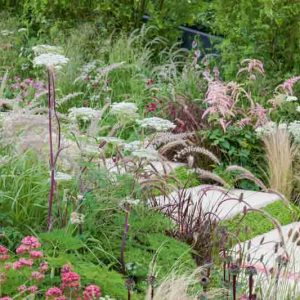
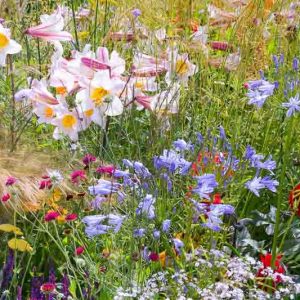
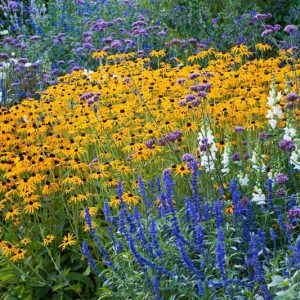
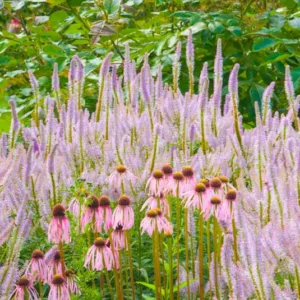
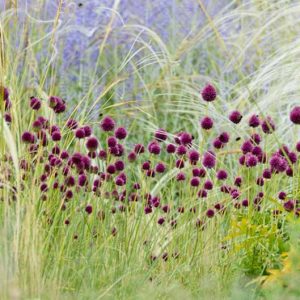
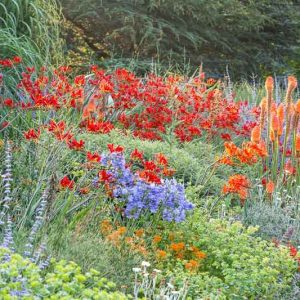
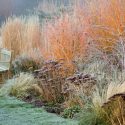
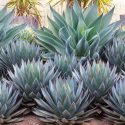
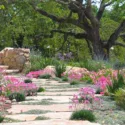
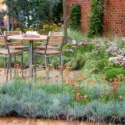
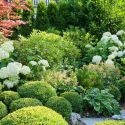
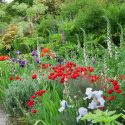
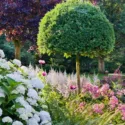
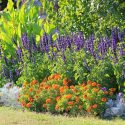
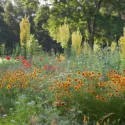
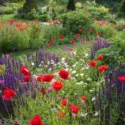
Create a membership account to save your garden designs and to view them on any device.
Becoming a contributing member of Gardenia is easy and can be done in just a few minutes. If you provide us with your name, email address and the payment of a modest $25 annual membership fee, you will become a full member, enabling you to design and save up to 25 of your garden design ideas.
Join now and start creating your dream garden!
Create a membership account to save your garden designs and to view them on any device.
Becoming a contributing member of Gardenia is easy and can be done in just a few minutes. If you provide us with your name, email address and the payment of a modest $25 annual membership fee, you will become a full member, enabling you to design and save up to 25 of your garden design ideas.
Join now and start creating your dream garden!